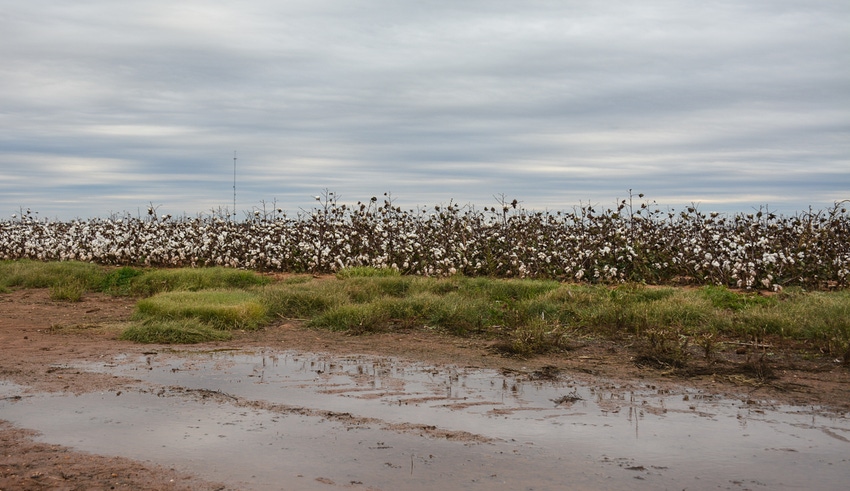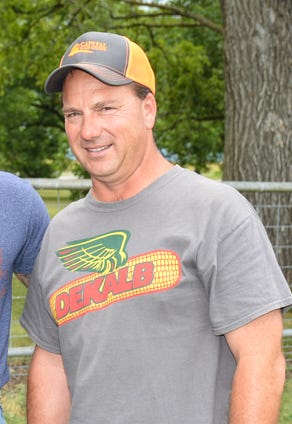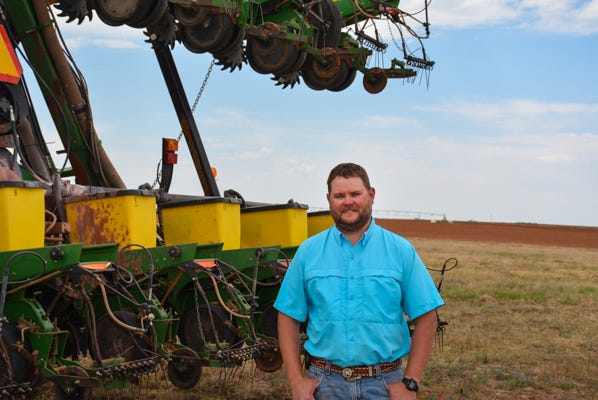
Farming is all about timing: a time to plant, a time to harvest, a time to receive rain and a time to dry out. But lately, the pendulum of agriculture seems to be oscillating between extremes.
“Weather-wise, it's been a tough year,” says Lloyd Arthur, long-time Crosby County, Texas, farmer. “At the beginning of the season, we had extremely dry weather when we really needed wet weather and now we have wet weather and we really need it to be dry. It's just like a clock, the pendulum swings too far anymore.”
Commodity prices seem to be vacillating as well. “Like with cotton prices, they got too high, so they bounced back and now they’re too low. I'd like some middle stream.”
In the Texas Blacklands, grower Clayton Seggern is looking for some middle ground in a season that has proven to be more than challenging. “We've got a little over half of our cotton out but it's still sitting in modules in the field and it's been raining since the first of September.”
In the last three days, he says they’ve received four inches of rain and still have cotton in the field. "It’s rained for the last seven weeks.”
In fields where the cotton has been harvested and shredded, the Thrall, Texas, farmer says it looks like, “You went out there and planted a crop, and it’s three weeks old. It probably won't be long before it starts putting on multiple squares. So, now we are trying to figure out what to do with that.”

Thrall, Texas farmer Clayton Seggern.
As for the corn he planted in February, while he had ample moisture to get it established, high temperatures and aflatoxin took a toll. “What hurt us was all the heat we had in May,” says Seggern, adding that depending on the area, some corn was good and some was bad. “A lot of people collected insurance because the yield wasn't there. And then aflatoxin varied from one end of the field to the other. We had some test over 300 parts per billion that we had to find a home for.”
Corn testing with aflatoxin levels from 21 to 100 parts per billion, receives a 10 percent discount. Levels measuring 100 to 300, receive another 10-cent discount, Seggern says.
Soggy peanuts
North of Seggern, on the Texas South Plains, growers are experiencing similar frustrations. Organic peanut farmer Mason Becker, who also grows conventional peanuts and cotton southwest of Brownfield, says since Oct. 5, he’s gotten six and a half inches of rain preceded by no significant moisture in almost a year.

Mason Becker, cotton and corn farmer, near Brownfield, Texas.
“It came in basically two waves —four inches one night, then a couple tenths here and there, and then two and a half inches another night. So, it’s wet,” says Becker. “We had maybe an inch of rain after we failed out cotton (cotton released by insurance) in the end of June, but we haven’t had a good soaking rain since this time last year.”
Becker, who grows organic Spanish peanuts and conventional Virginia’s, says he was gearing up to start digging peanuts when the fall precipitation began. “It'll be at least five days, maybe longer, before we can start digging peanuts and that's if we don't get any additional rain.
“And then guys have started defoliating cotton — and rain on open cotton is never a good thing as far as quality goes. So, not a great situation. We just need it to dry out.��”
According to USDA-NASS October estimates, the South Plains is expected to abandon half of its planted cotton acreage. Production for the region is estimated at 2.17 million bales, down from 3.1 million last year.
While not all of Becker’s cotton acres were failed, what’s left isn’t great, he says. “I pulled the water off in July and started watering peanuts pretty heavily, so it’s not very good at all. This year, the water situation dictated most of my moves.”
Caswell conviction
Between Brownfield and Lubbock, farmer Rhett Green says his dryland cotton is doing better than he ever expected. Rhett Green, who also farms acres on the Texas/New Mexico state line, says a deep conviction by his late grandfather Olane Caswell and a good price motivated him to keep his dryland acres.
See 2018 drought not “another 2011;” some cotton better than expected
“My grandad, who just passed away Oct. 3, taught me everything I know about farming. He was one to never give up on a crop, always plant and never try to go for insurance — not saying some years lately, it hasn't been the way to go — but we got a little bit of planting rain, not much, and I went ahead and busted down in most of my dryland acres and tried to get a stand.”
After he planted, Green says he caught about an inch of rain. “I went ahead and scratched everything because at the time we were seeing 94-cent cotton, so I thought, I want to make a go at it.”
And while a couple of fields were skippy, he says he got a stand. “I caught another little shower a few weeks later and by then I knew, we were going to keep it — it was going to make something.”
Since then, Green’s crop has not received any rainfall until it began raining at the end of September and with the October 14th freeze, he says he’s optimistic his dryland might make between half and three-quarters of a bale. “If we could have had another week or two of some good heat units, we might have made between three-quarters to a bale.”
The spotty rainfall throughout the area in the last two weeks has also brought hail. Green says while the frozen pellets only knocked the leaves off of his cotton, his brother who farms drip-irrigated cotton east of Brownfield, along with several other farmers, lost everything, “They got hailed out. It destroyed it,” Green says.
Double negative
As for the state of Lloyd Arthur’s replanted cotton crop, he describes it as a double negative. “I'm not pleased with it because it's late, but it is better than I ever could have imagined after the hail at the first of June. It has surprised me, but you know, I'm not proud of it until I get into harvest because I judge my crop by if I make my obligations to pay the bank back.”
The upside of this fall rain event? “On those dryland acres I lost, I have planted a winter cover crop. And because of the moisture, my cover looks better than I've ever seen it. You’ve got to find a bright side and right now that’s what I’m seeing with the rain, but not so much for cotton harvest.”
About the Author(s)
You May Also Like






